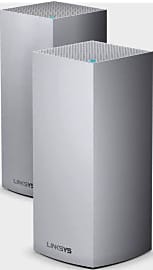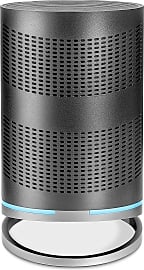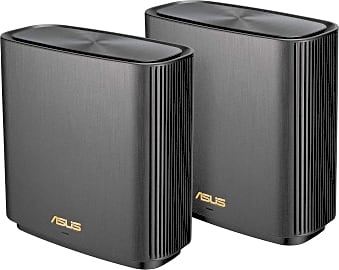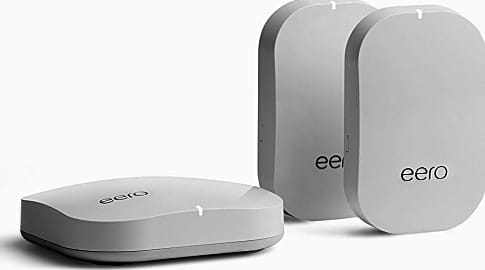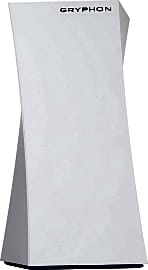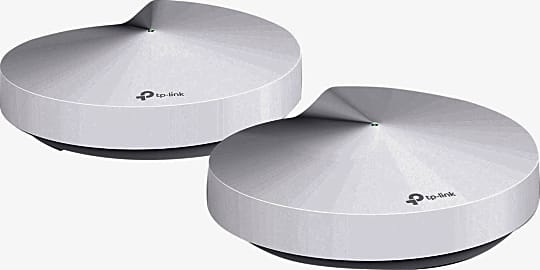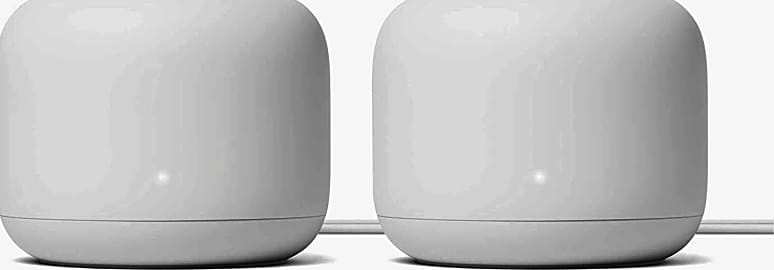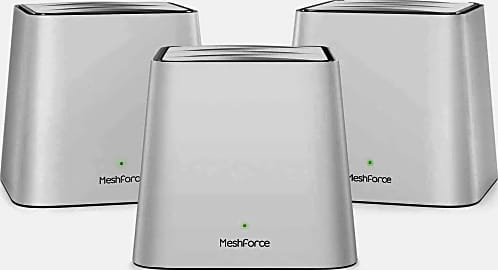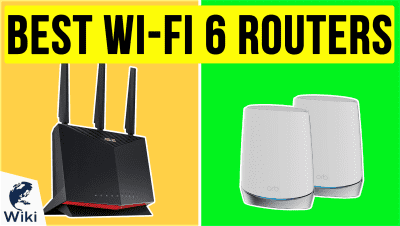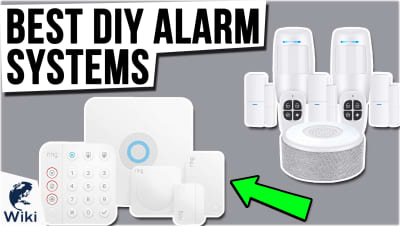The 10 Best Home Wi-Fi Systems

This wiki has been updated 37 times since it was first published in January of 2017. Even with the fastest internet service plans, you might still experience areas in your home that struggle to find or maintain a connection. Mesh Wi-Fi systems solve this problem by creating an overlapping network that ensures you get a strong signal anywhere in the house, so you can say goodbye to dead zones, even when there are many devices connected or you're moving from room to room. When users buy our independently chosen editorial selections, we may earn commissions to help fund the Wiki.
Editor's Notes
August 06, 2020:
While the Arris Max Pro was the only model on our previous list to support Wi-Fi 6, more companies have upgraded their mesh systems to align with this faster, stronger protocol, which is capable of reaching speeds in excess of six gigabits per second, and that can handle a tremendous amount of devices. That makes these selections particularly good for people with complicated smart home setups, as things like TVs, laundry units, HVAC systems, and more, can all function at their most efficient without putting a dent in things like 4K streaming and gaming.
One interesting feature people should look at is something called a backhaul. In mesh systems, the backhaul is the connection that spreads from the initial router to the next closest satellite, and the one after that, and so on. Some devices, like the Asus ZenWiFi AX Charcoal, have a dedicated wireless backhaul channel that ensures the strength of signal coming from the farthest node isn't meaningfully weaker than the signal coming from the router directly connected to your modem. Other systems, like the Google Nest, only support a wired backhaul, meaning you have to choose between physically connecting each mesh node and suffering a drop in signal strength with each link in the chain. For some, the benefits of a wireless backhaul are overshadowed by the increase in cost, especially in small homes, but it should be something owners of large homes should seriously consider.
May 03, 2019:
Mesh Wi-Fi systems are rapidly replacing traditional routers in homes across the country. Their main benefit over routers and extenders is the single, uninterrupted connection they provide to every device in the vicinity. The Netgear Orbi RBK50 isn't the very newest piece of hardware, but it continues to get regular updates and is frequently lauded as one of the best. Similarly, the Eero has been around for a while, and it's hard to argue with its success as well as speed. Google Wi-Fi is another that's been a long-running favorite, although it isn't quite the fastest, and not everyone is onboard with Google's overarching control of nearly every facet of the Internet. Nonetheless, it's especially easy to set up and updates itself automatically. AmplifiHD is one more well-respected system, and it's one of the more popular wall-plug types on the market.
TP-Link has put out a handful of interesting devices in recent months. Their M4 is less expensive than much of the competition, and while it also has slower top speeds than most, very few homeowners actually have service plans whose download speeds can max it out. So if you don't want to spend much, that's probably the best choice. The P7 adds a very interesting feature, as it's the only one we found with a powerline backhaul. This actually taps into a home's electrical wiring and allows the satellites to communicate with each other through that physical connection, which cuts out some of the latency and bottlenecking of an all-wireless network. It's a touch more expensive than the M4, but a lot of users may feel it's worth it to help ensure consistency in the entire home. And if you're looking to consolidate your smart devices, check out the M9, which has ZigBee and Bluetooth built right into it.
Linksys is another huge name in networking, and their most recent Velop release is notable not because it's super fast -- it's not -- but it's considerably more affordable than the tri-band model, which we feel is a little overpriced. Gryphon's model has more powerful radios than most, so only the largest homes will need more than two devices, which is good, because it's awfully costly. But it's not expensive as the Arris, which is the first to implement the wireless formerly known as 802.11ax. If you're the proud owner of a Samsung S10 or you typically like adopting new standards early, that's currently the only way to get ready for the new wave of low-latency wireless networking.
Special Honors
Amplifi Alien An advanced 8x8 router designed with gamers in mind, this unit can be deployed throughout a home to expand coverage wherever you need it, and with outstanding speeds reaching over 7.6 gigabits per second. The router features a full-color display that can give you a live look at its performance, and that combines with an excellent smartphone app to make setup a breeze. And even with all those features, its price is on par with the those of its competition. amplifi.com
The Dark Side Of Cable Internet
That way, there’s only one thing to set up, and fewer wires clogging up your living room.
I’m going to reveal something to you now that may shock your system. Your cable company does not care about providing you with the best possible hardware. It isn’t in their best interest for your internet speeds to be blazingly fast, or for its coverage to extend to every corner of your home. After all, their ability to sell you on a faster, more comprehensive package a year down the line hinges, at least in part, on your current unhappiness.
So, what can we do to fight back? Well, some people think we should take up arms against the likes of Verizon and meet fire with fire until we either have a fast, free internet for all or die trying. That sounds like a pretty bad idea to me. A more effective, and almost equally subversive move is to cut them out of your hardware picture.
The modem your cable company gives you when you sign up usually has a Wi-Fi router built into its body. That way, there’s only one thing to set up, and fewer wires clogging up your living room. The problem, however, is threefold.
Firstly, the modem isn’t fast enough. There’s a good chance that your internet service supports a high number of downstream and upstream channels. More channels result in faster, more reliable connections. That cable company modem likely has four to eight downstream channels, when industry numbers in third party units average 16.
Secondly, the router isn’t strong enough. Wi-Fi signals from cable company routers are notoriously weak. I haven’t had one let me go more than 20 feet from its shelf without beginning to significantly lose connection quality.
Thirdly, the whole thing is a rental. Check that contract again. You’re probably paying a monthly cost for that weak, slow unit.
Ideally, you’ll upgrade both your router and modem, and you’ll see a marked improvement in speed and coverage. Unfortunately, the improvement in coverage may have very real physical limitations that aren’t completely the fault of your cable company’s frugality. Physical barriers like support walls, tiling, and outdoor areas, as well as vertical limitations among your house’s floors can all stretch your signal too thin.
Range extenders are a decent way to help improve your signal, but they tend to be expensive, hard to configure, and limited in their own strength. A home Wi-Fi system, on the other hand, replaces your router with something much stronger. Many also provide you with additional extension hubs to create a webbing of total coverage that the industry calls mesh Wi-Fi.
How To Spin Your Wi-Fi Web
Better Wi-Fi coverage starts with a better router. That’s the basic unit in each and every system on our list. Some systems will sell you this single, more powerful router on its own. This an ideal choice for the studio apartment dweller who wants the additional advantages of a Wi-Fi system, but may not need the extended coverage area.
More commonly, you’ll see at least two pieces sold as a home Wi-Fi system. These systems not only replace your existing router with something more powerful, they also let you determine where and how your signal extends.
Let’s imagine that the cable line coming into your home is located by the front of your house on the first floor.
Let’s imagine that the cable line coming into your home is located by the front of your house on the first floor. Your bedroom, however, is at the back of the house on the second floor. You just refinished the attic and converted it into your home office, with your desk about as far away from that cable line as possible.
With a home Wi-Fi system, you can place the router unit next to your modem, just as you normally would. From there, you can strategically place satellite units throughout the house. The signal coming from your router can piggyback off each unit, progressing a strong feed throughout the house. You’ll definitely want to place a hub near that bedroom and attic office to ensure a strong signal, as well as another hub somewhere in between those points and the base router. This will endure the strongest signal passage.
Just how many hubs you need will depend greatly on the size of your space and any barriers to a wireless signal you know to exist. A single-floor ranch-style home may only need the router unit and a single satellite, whereas a three-story McMansion would require significantly more hubs.
Additional Benefits Of A Home Wi-Fi System
You may reasonably ask yourself why you can’t just achieve the same results by strategically placing Wi-Fi extenders throughout your home. It’s a good question.
The biggest problem with merely investing in a range extender is that the signal it receives in the first place is the same weak juice your cable company saddled you with when you signed up. Even if the signal itself were to reach farther, it would slow down too much along the way.
Another benefit of these systems that is perhaps not talked about enough, is their aesthetic.
The best home Wi-Fi systems have more to offer their customers, as well. Many have intuitive and interactive smartphone apps. These let you see your signal strength in action, and can help you identify the best places to install your satellite hubs.
Furthermore, these smartphone apps let you add parental controls, and schedule or enact intentional service interruptions. Nothing will get your kids out of their rooms and seated at the dinner table faster than the knowledge that, as soon as they finish their vegetables, Mom’ll turn the Wi-Fi back on.
Another benefit of these systems that is perhaps not talked about enough, is their aesthetic. Go take a look at that cable company router again. It’s absolutely hideous, the unfortunate brainchild of a lonesome submarine designer and a very bored H.R. Giger. Home Wi-Fi systems, on the other hand, are smaller, more elegant, and less obtrusive. They’re designed to fit into the décor of the modern household. To that end, many also integrate readily with home automation systems and the ever-growing internet of things.



